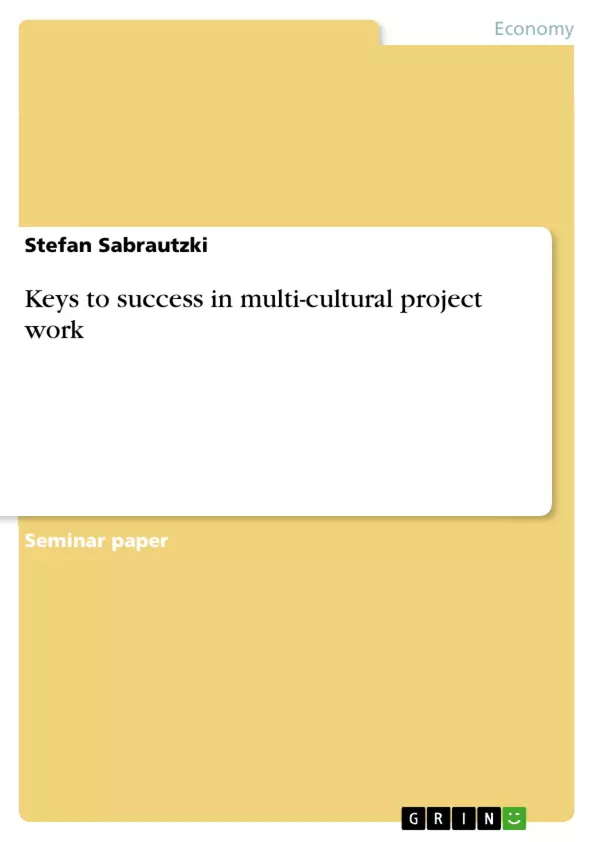In modern economy, companies and industries face more complex challenges than ever be-fore. Globalized markets offer great opportunities for their players, but operating successfully in this complex environment requires different approaches than in a domestic environment.
Making best use of the availability of resources like goods, employees and services from abroad on the one hand, but managing challenges like increasing competition, pressure on costs and innovation and the high dynamic on many foreign markets on the other hand are so-phisticated tasks an international company nowadays has to deal with.
Global interaction requires a company to cooperate with partners in the different countries. Due to many reasons, cooperating successfully on such international level is very difficult. Explain-ing the requirements and challenges of cross-national projects, emphasising the importance of cultural differences and their consideration in inter-cultural project work and determining how such projects can be managed successfully is subject of this paper.
Inhaltsverzeichnis (Table of Contents)
- Introduction
- Characteristics of inter-cultural projects
- Purpose and benefits
- Challenges
- Defining project success
- Universal definition
- Alternative definition
- Cultural studies
- The concept of culture
- Cultural dimensions
- Managing cultural differences in projects
- Aligning projects and partners
- Leadership requirements
- Conclusion
Zielsetzung und Themenschwerpunkte (Objectives and Key Themes)
This paper aims to explore the challenges and requirements of cross-national projects, highlighting the importance of cultural differences and their consideration in inter-cultural project work. It also seeks to determine how such projects can be managed successfully.
- The significance of cultural differences in inter-cultural project work.
- The benefits and challenges of engaging in international projects.
- Strategies for successful management of inter-cultural projects.
- The importance of aligning project goals with partner expectations.
- The leadership skills required for effective inter-cultural project management.
Zusammenfassung der Kapitel (Chapter Summaries)
- Introduction: The paper establishes the context for the importance of inter-cultural projects in a globalized economy. It highlights the challenges and opportunities that arise from working with international partners, emphasizing the need for cultural sensitivity in project management.
- Characteristics of inter-cultural projects: This chapter explores the purpose and benefits of inter-cultural projects. It discusses how companies can leverage globalization to access new markets and resources, as well as the opportunities for professional development that such projects provide. The challenges of managing cultural differences in international projects are also discussed, including the complexities of communication, legal and political environments, and security considerations.
- Defining project success: This chapter explores different definitions of project success, both universal and alternative perspectives. It examines the criteria used to evaluate project outcomes and the importance of aligning project goals with the expectations of all stakeholders involved.
- Cultural studies: This chapter delves into the concept of culture and its influence on project management. It introduces various cultural dimensions that play a role in inter-cultural project work, providing a framework for understanding the complexities of cultural differences.
- Managing cultural differences in projects: This chapter focuses on practical strategies for managing cultural differences in projects. It discusses how to align project goals and expectations with those of international partners and identifies the leadership skills necessary for navigating cultural complexities.
Schlüsselwörter (Keywords)
The paper examines the key concepts of inter-cultural project work, globalization, cultural differences, project success, cultural dimensions, international project management, and leadership in a globalized context. The emphasis is on the practical implications of cultural sensitivity and its impact on achieving successful outcomes in international projects.
- Citation du texte
- Stefan Sabrautzki (Auteur), 2010, Keys to success in multi-cultural project work, Munich, GRIN Verlag, https://www.grin.com/document/146771



